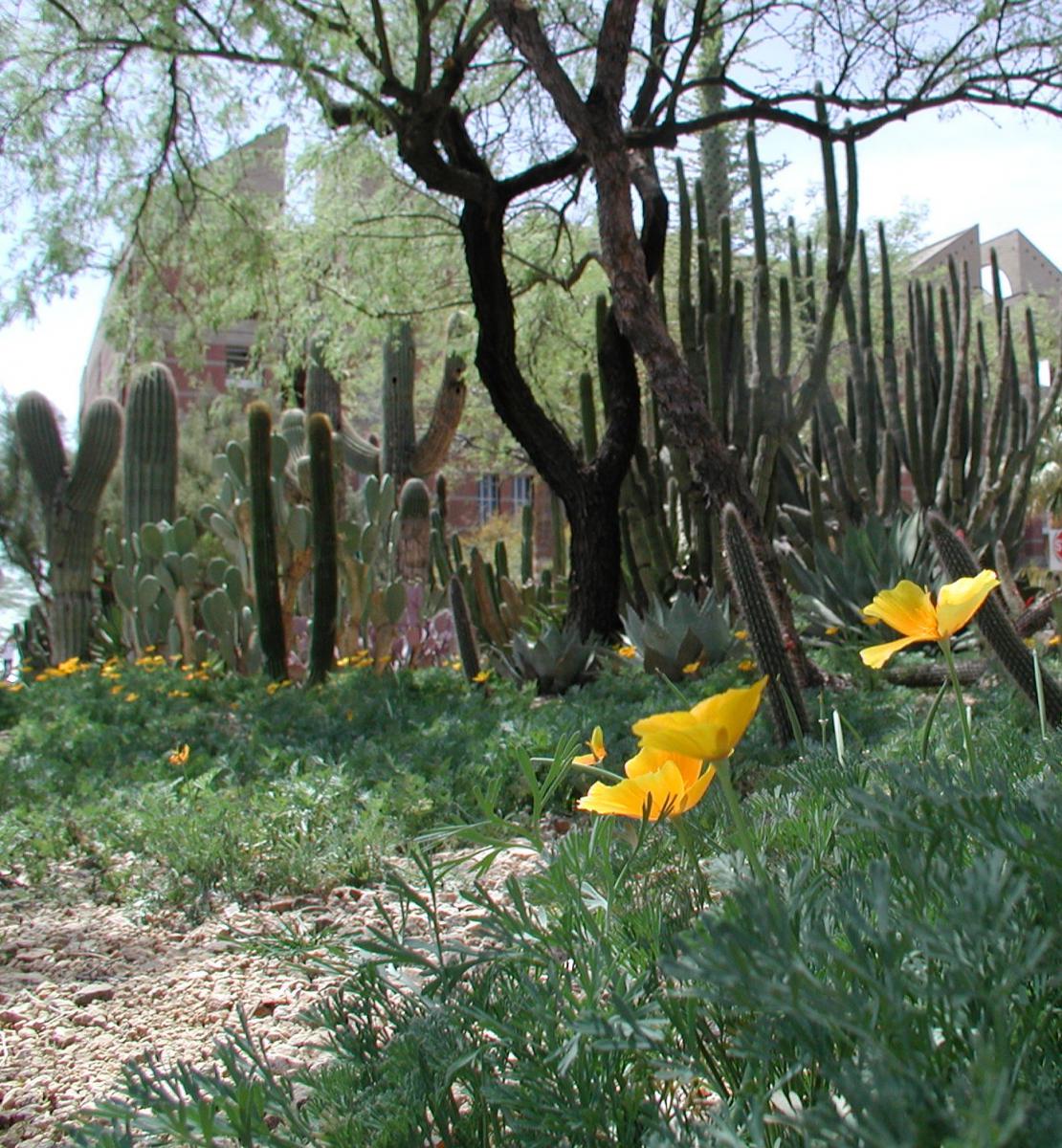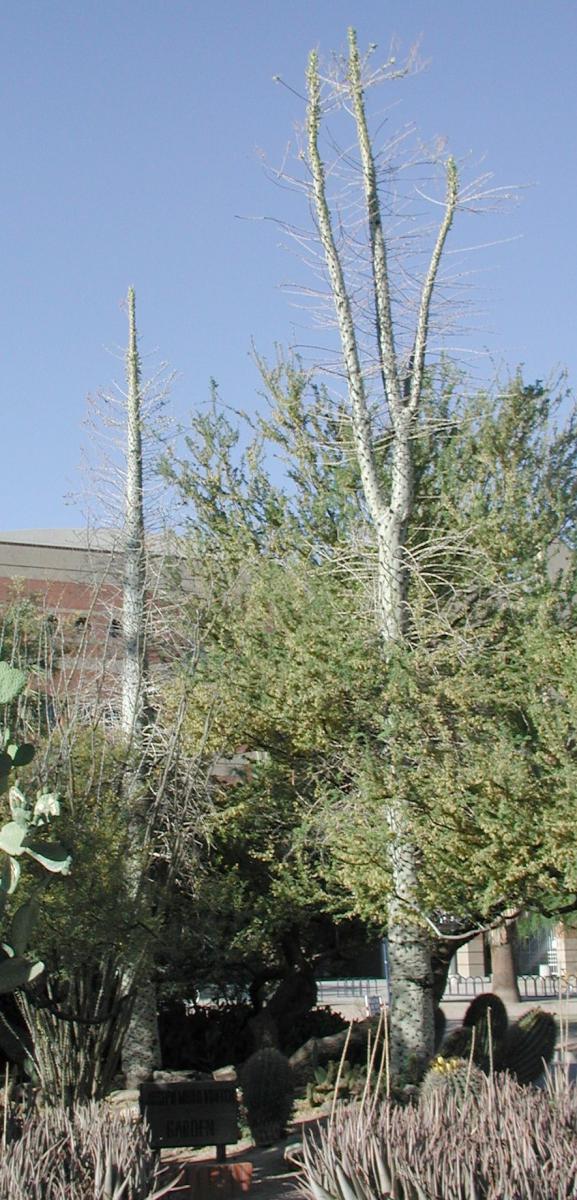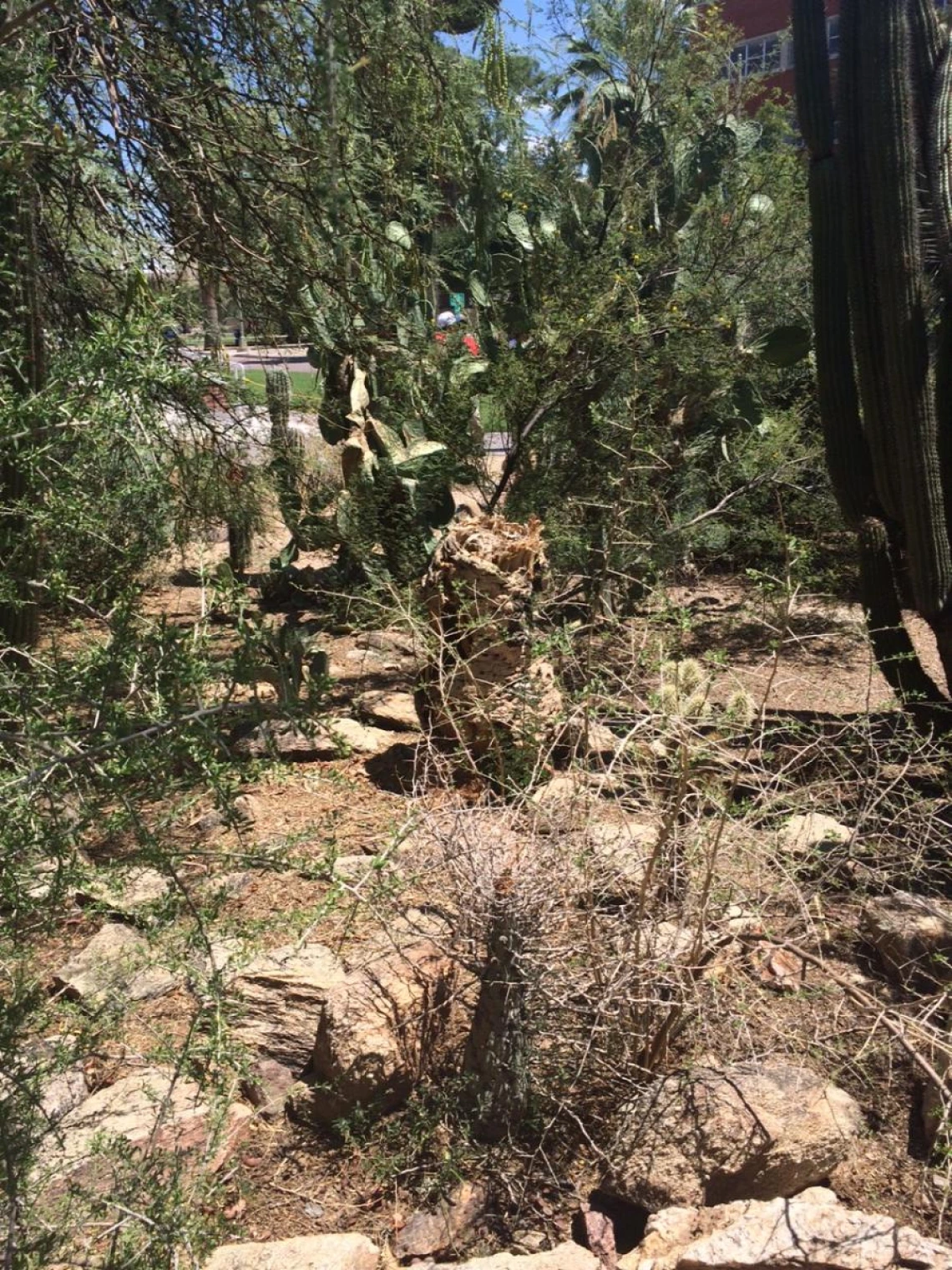The first few days of remind us of the coming winter. The cooler weather approaches also means the arrival of optimal growing season for one of the most extraordinary plants on the University of Arizona campus, the Boojum (Fouquieria columnaris). In fact, some refer to this as one of the most unusual plants in the world. Native to Baja California, Fouquieria columnaris is a relative of the ocotillo. The columnar form grows up to eighty feet tall and live over seven hundred years. The Seri people, an indigenous Mexican tribe, believe that boojums were once giants who, while attempting to escape a flood, got trapped and turned into trees by the rising water. To them, the boojum hold great power, such that harming one brings a destructive wind upon the land. Its common, English name is attributed to Godfrey Sykes, a well-read and well-traveled Englishman, who was quoting "The Hunting of the Snark"" by Lewis Carroll. Upon seeing one for the first time, he said, "Ho, ho, a boojum, definitely a boojum," and the name has stuck.
The boojum were first planted in 1929 by President Homer Shantz, who commissioned reserachers from the Desert Lab to bring back a collection that adorned the historic cactus garden for almost 100 years. The plant, which looks as weird as its name, amazed campus community and visitors alike and served to create reason to reflection. Sadly, the last of Shantz's original specimens was destroyed in 2014. While small off-spring from the originals continue to grow at the base of the original parents, The Campus Arboretum is eager to perpetuate the tradition.
In Spring 2017, a 3-foot-tall boojum was planted on campus near the site of the Shantz collection in the Joseph Wood Krutch Garden. This sprite botanical addition was donated by Tucson resident and Campus Arboretum Board Member, Bob Baker, who grew the specimen in a pot for decades. This allowed us to transplant the plant with an intact root ball. So far, it appears to have negotiated the process of being transplanted into the campus grounds much better than previous attempts. In 2015, for example, a magnificent 8-foot-tall specimen obtained and transplanted on campus (with support from ISA arborist and Campus Arboretum Board Member Juan Barba, in partnership with Arizona Cactus and funded by Dick Weidhopf) died after a very wet, warm summer. We believe the stress of being shipped bare root, and transplanted into warm, wet conditions predisposed the plant to fungal infection that led to its demise. We continue to learn and proudly continue the campus tradition of raising and tending these wonderfully unique plants.
You can go check out these magnificent Boojum’s located in the Joseph Krutch Garden, or on the south west corner of the Forbes building. Our Arboretum map will show you exactly where to go! Even better, join us for our Sonoran Native Plants tour scheduled soon. For more information on this and other tours, visit our calendar of events page.
Still interested in learning more about the Boojum? William Thornton has created an inventory of all of Arizona's boojums. The UA's tallest plant at the time of it's demise, was tied in height with nearly 40-foot-tall specimen at the Ghost Ranch Lodge in Tucson. Thornton states one place to visit a large collection of Boojum trees is at the San Diego Zoo's Wild Animal Park. Other specimens can be found at the Desert Botanical Garden in Phoenix, the Huntington Botanical Gardens and Rancho Santa Ana Botanical Gardens.

Below, you can see the stump for the last of President Shantz’s original 1929 Boojums. Additionally, pictures from the original 1929 planting can be found on our website.





